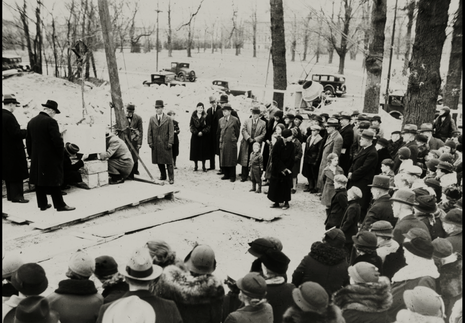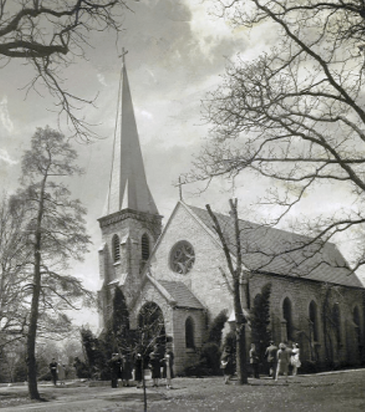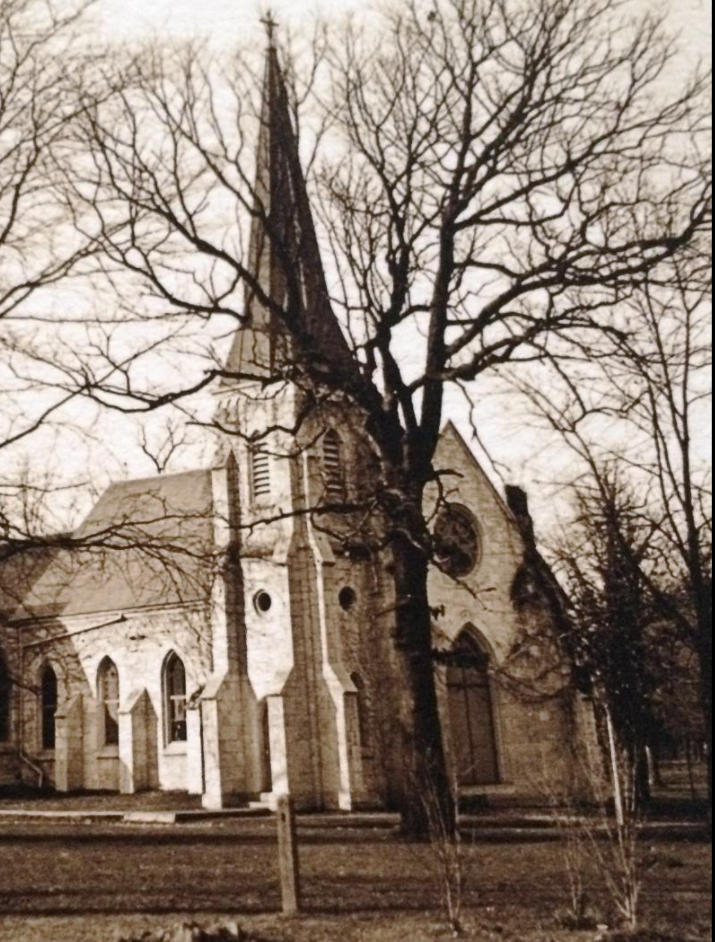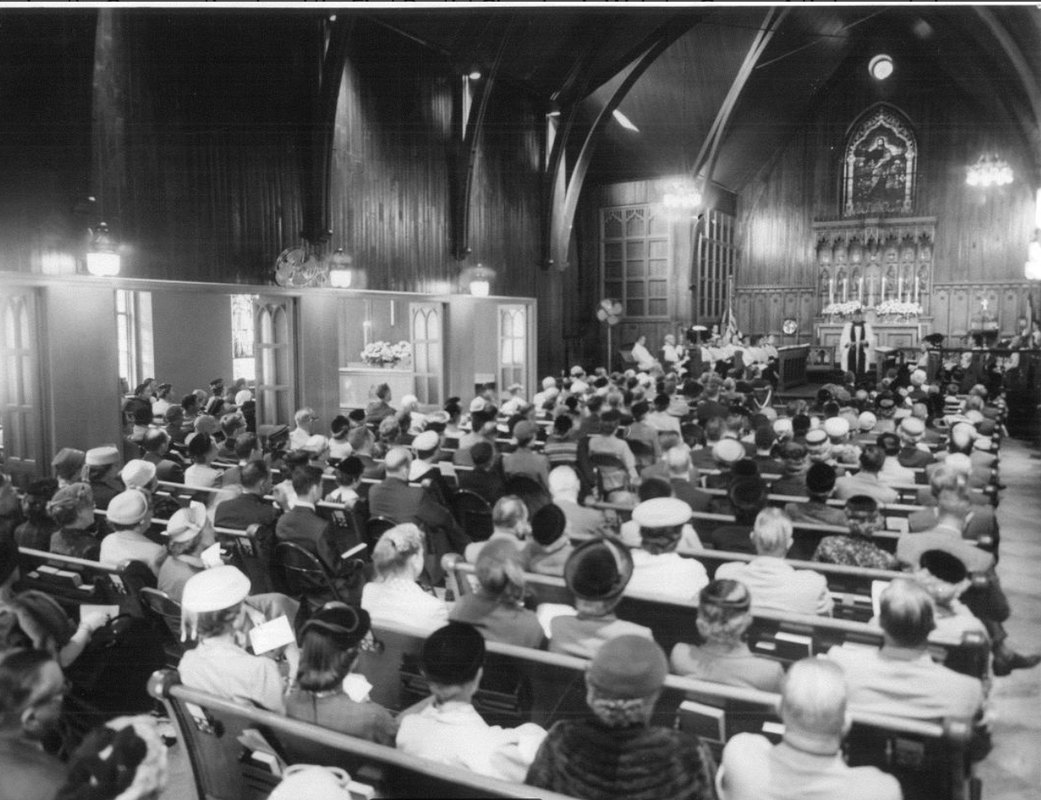|
The first settlers of Webster Groves were not farmers, but businessmen who commuted daily to St. Louis, and who wanted to get their families out of the city at least for a part of the year. They had come from the eastern and southern United States for business purposes and had first settled in St. Louis. If the railroads had chosen another route through Missouri, the Webster Groves and Kirkwood of today would not exist. Richard Lockwood, a St. Louis businessman met the sister of a close friend and business associate.
She had come from Virginia to visit her brother George. Angelica Peale Robinson’s visit was to result in a romance, and her marriage to Mr. Lockwood by the rector of St. George’s Church, St. Louis, in 1851 was held in the home of Mr. James E. Yeatman, a business associate of Mr. Lockwood. |
About 1850 Richard Lockwood purchased two 40-acre lots in the Sarpy tract, named thus for the Frenchman, Gregoire Sarpy, to whom this land had originally been granted in 1802. In the next few years the Lockwoods built a summer home on their purchased land. A stroll one evening in 1857 over their property resulted in the choosing of a knoll, and promising themselves that there they would see built an Episcopal Church, since the nearest Episcopal churches were downtown at 17th and Olive and the new Grace Church out in Kirkwood, further along the railroad.

(The place selected was the junction of two roads, Big Bend and Webster Station Road—now Lockwood. This point was equidistant from three stations on the Missouri Pacific Railroad: Laclede, Fairview, and Webster. For many years Emmanuel Church is listed as being in
Laclede and Old Orchard.)
It was nearly 10 years before Angelica and Richard Lockwood could keep their promise, due to the Financial Panic of 1858 and the long, hard years of the Civil War.
By 1866 their fortunes had improved, and they gave the job of planning a church building to Henry Isaacs, an architect who had trained under the great Richard Upjohn in New York. Mrs. Lockwood wished the church to be similar in design to the one in Shepherdstown, Virginia, where she had grown up, and a copy of an old print of it shows great similarity to the original part of Emmanuel. On October 11, 1866 the cornerstone was laid—the same year that saw the founding of the Presbyterian, the Congregational, and the First Baptist Churches in Webster Groves. A tin box sealed in the cornerstone contains a Bible, a Prayer Book, the Southern Churchman, the Missouri Republican, and currency and coins of the day. At least this is what we read in the records; we cannot prove it, for alas, with all the additions and rebuilding, the original cornerstone is “mislaid.”
Laclede and Old Orchard.)
It was nearly 10 years before Angelica and Richard Lockwood could keep their promise, due to the Financial Panic of 1858 and the long, hard years of the Civil War.
By 1866 their fortunes had improved, and they gave the job of planning a church building to Henry Isaacs, an architect who had trained under the great Richard Upjohn in New York. Mrs. Lockwood wished the church to be similar in design to the one in Shepherdstown, Virginia, where she had grown up, and a copy of an old print of it shows great similarity to the original part of Emmanuel. On October 11, 1866 the cornerstone was laid—the same year that saw the founding of the Presbyterian, the Congregational, and the First Baptist Churches in Webster Groves. A tin box sealed in the cornerstone contains a Bible, a Prayer Book, the Southern Churchman, the Missouri Republican, and currency and coins of the day. At least this is what we read in the records; we cannot prove it, for alas, with all the additions and rebuilding, the original cornerstone is “mislaid.”
|
A bell in the tower carries the inscription “Jenne Lockwood, 1867”. Information garnered in 1963 tells us that this bell was given in honor of Jane Morrison Lockwood, daughter of Mr. and Mrs. Richard Lockwood, who was seven or eight years old at the time, Emmanuel was built. She was nicknamed Jeanie, and the spelling on the bell is just an error on the part of the Foundry. The metal cross on top of the church was also to be just her height at that time.
Almost exactly a year later, on October 24, 1867, Bishop Hawks consecrated the new building to the worship of Almighty God by the name of Emmanuel Church. It was to be his last official act as the Diocesan Bishop. He died just after Easter in 1868. On May 28, 1868, Emmanuel Church was admitted to Diocesan Convention, and P. N. Meade, lay-reader, reported that he was encouraged by their attendance. |





